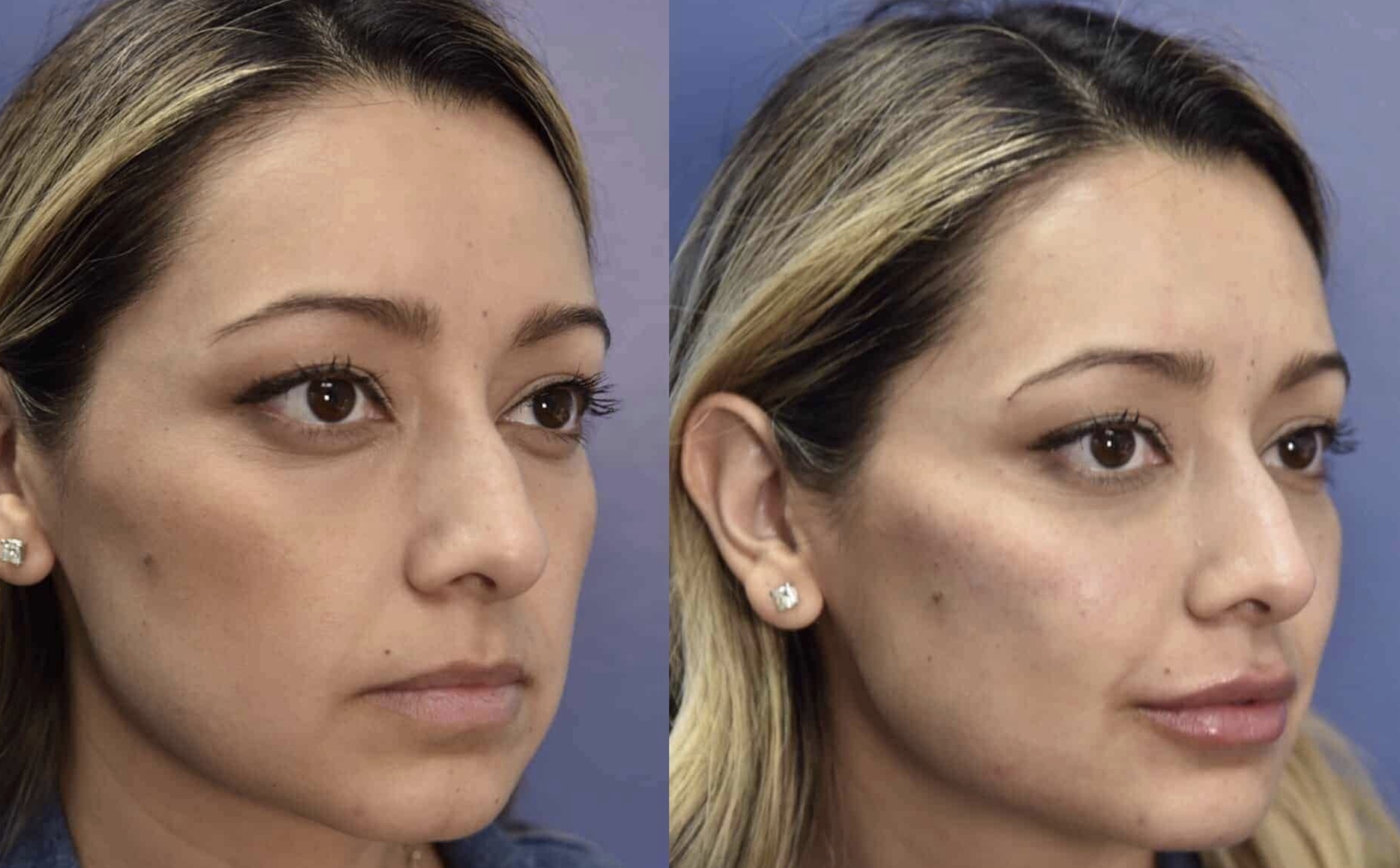If your low or barely-visible cheekbones bother you, cheek fillers can be a huge help. Cheek fillers are an effective and non-invasive way to replace volume loss in the face caused by aging.
Cheek fillers help improve the volume of sunken-in cheeks that lack projection or definition. However, there are also some side effects to keep in mind before you opt for cheek filler treatment.
Let’s take a closer look at cheek fillers, the costs, and things to expect during and after the treatment.
Chapter Overview
What is a Cheek Filler?
As we age, our cheeks naturally fall and can weaken or sag. The skin in this area may also thin out, become dryer, and lose its elasticity over time.
Cheek fillers are filler material made of naturally-occurring substances injected into the cheeks to restore this loss of volume.
In addition to that, these cheek fillers help smooth out the facial contours and even out wrinkles and fine lines in the face.
Injectable cheek filler products come in three major forms. They could be made from hyaluronic acid (HA), polylactic acid, or the off-label alternative calcium hydroxyapatite (CaHA).
There are vast differences between them and choosing the right cheek filler product will depend on your clinician’s prescription.
If you’ve had your fair share of makeup tricks and want something with more permanence, consult with a physician or other medical professional about what cheek filler treatment may best suit your needs.
When Should People Resort to Cheek Fillers?
Cheek fillers may be used whenever the patient feels that their cheeks have lost volume and definition.
There are a variety of treatment methods that can help add volume and brighten up your face, but cheek fillers excel due to the following benefits:
- Lower risk of infection
- Very rapid recovery
- More filler can be added as needed
- Smooths out wrinkles
Regardless of your reasons for getting cheek filler treatment, it’s important to remember that any procedure involving injectables will need to be supervised by a medical professional.
How Long Do Cheek Fillers Last?
Most cheek filler procedures are done on an outpatient basis under local anesthesia. The entire injection process only takes about 20 minutes to complete, and you’ll be able to see results within the same day or the next.
If you’ve ever wondered how long does cheek fillers last, the fillers can stay in your face anywhere between six months to two years, depending on the type you opted for.
As a rule of thumb, cheek fillers with hyaluronic acid generally last between 6 and 12 months; calcium hydroxylapatite between 12 and 18 months; and polylactic acid tends to last the longest at 2 years.
Does Applying Dermal Fillers Hurt?
Depending on the injection site, your provider may or may not apply local anesthesia to make the cheek filler procedure easier.
The injection process isn’t too painful, however, and should only last for a few minutes. The injection itself will feel like a short and mildly irritating pricking sensation.
When the provider presses the plunger down, there will be a little bit of pressure on the region being injected as the product enters the injection site.
After that, you’re unlikely to experience any further pain.
What Are The Side Effects?
Cheek fillers are generally safe, but there are some side effects to watch out for. Here are some of the common side effects of cheek filler injections:
- Temporary bruising
- Swelling
- Redness
- Itching and irritation
- Infection
- Numbness
There’s also a rare risk of an allergic reaction to the product.
If your provider is experienced and licensed, you’re likely to not encounter any major problems in your treatment.
How Much Do Cheek Fillers Cost?
The cost of cheek filler treatment varies depending on the type of product used, the number of procedures required for treatment, and your geographic location.
Most injections can range anywhere between $500 to $1,000. Injections that last longer are more expensive than short-term injections. Injections can also range from subtle to more intensive tissue augmentation procedures, with the latter being more expensive.
Can I Have Cheek Fillers While Pregnant or Breastfeeding?
It’s not recommended to get cheek filler treatment while pregnant or breastfeeding.
There’s a lack of information on whether or not cheek filler treatments are harmful to infants, cross into their breast milk, or enter the bloodstream.
For the safest course of action, you should wait until you’ve stopped breastfeeding or after you’ve had the baby before considering cheek filler treatment.

